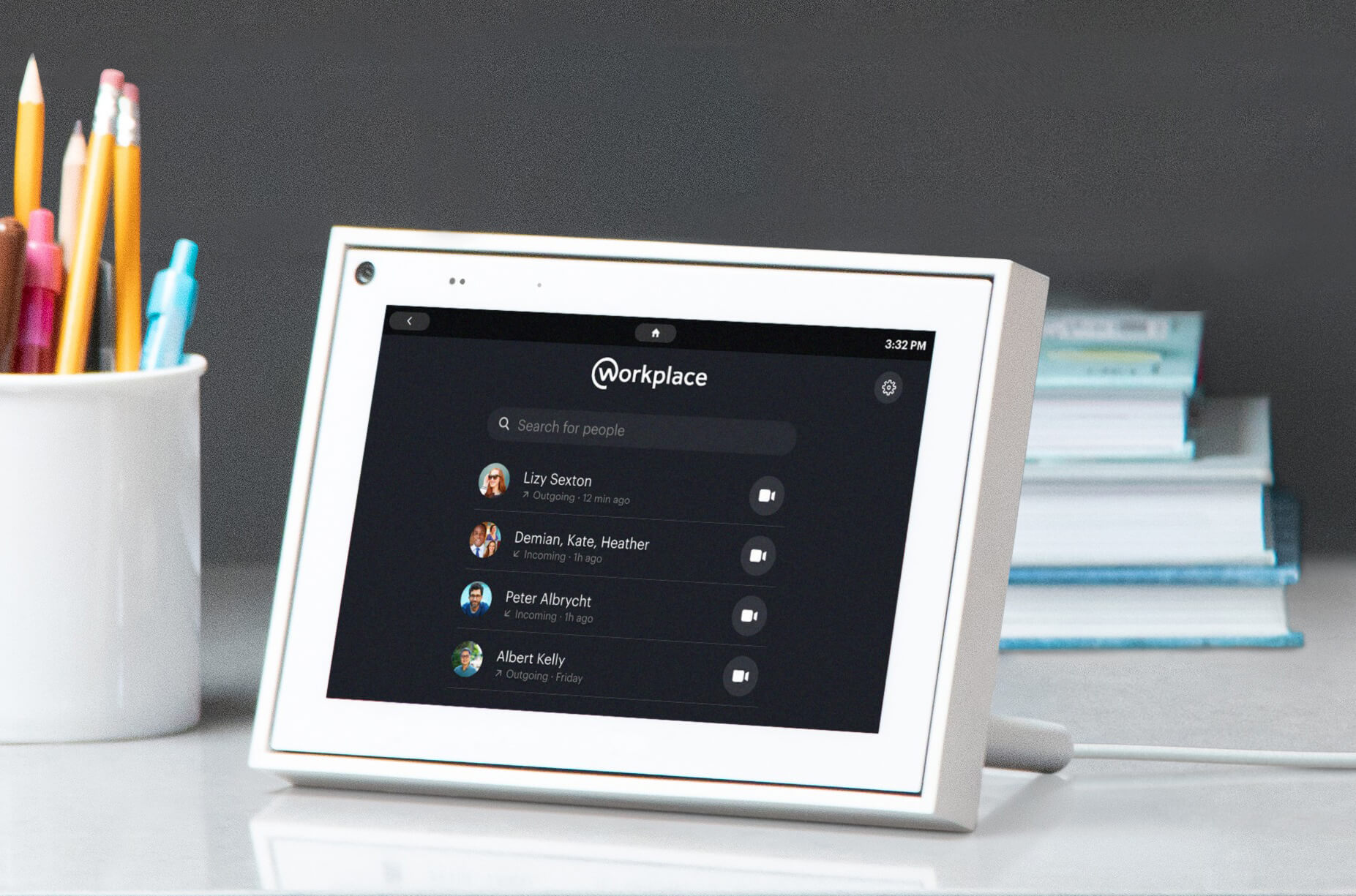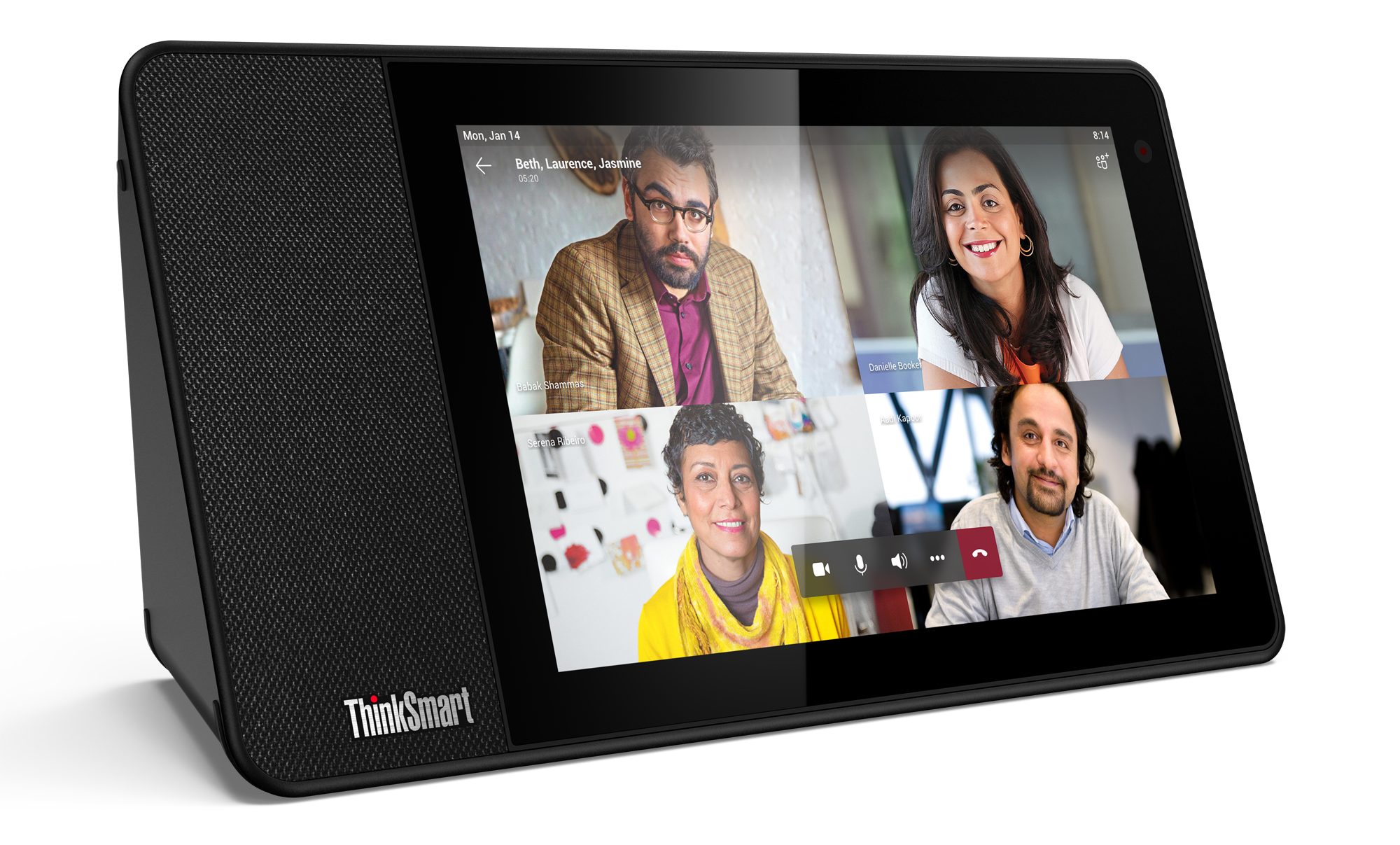Would you like to see a smart display on your desk or in your home office?
2020-01-25
David Roe at CMSWire wrote a great piece looking at Facebook’s Workplace and their rollout of support for Facebook’s line up of smart displays, called Portal. Portal is effectively a smart speaker with a screen, comparable to Amazon’s Echo Show and Google Nest Hubs.
Facebook themselves describe it this way:
Portal can help you connect with your co-workers when you’re working from home. Workplace provides a simple and secure way for people to communicate, collaborate and connect at work using familiar Facebook features like chat, video calling and groups. With Workplace on Portal, you can collaborate more effectively, building strong relationships with your co-workers, regardless of distance.

Using Workplace on Portal Mini
David positions Workplace’s Portal support around the growth of videoconferencing. But if we look at other emerging products in this area, I think we are seeing a blend of demand for informal and small group ('huddle') videoconferencing alongside the rise of chat and the need to better support distributed teams.
For example, at CES, Lenovo launched the ThinkSmart View, which is a new device for Microsoft Teams.

Lenovo ThinkSmart View works with Microsoft Teams
They talk about the ThinkSmart View as a “personal productivity assistant for the workplace” and describe different ways to use it:
The ThinkSmart View’s beautiful, user-friendly design works across a variety of office spaces—including your home, if you happen to be working remotely. It’s flexible enough for hotdesking and common area phone capabilities, including phone booths and other shared spaces.
There are also some startups with their take on how to solve the same problem of connecting distributed teams. For example, teamfunk is a proprietary solution along the lines of Portal and the ThinkSmart View. And PukkaTeam tries to solve the same problem without using dedicated hardware.
Also worth a mention is the Dot table, which works with Amazon’s Alexa, is another take on how to embed a smart assistant into a piece of multi-function furniture that could be used in a home office (although it lacks a camera).
Popular video conferencing solution Zoom has also recently moved into the unified communication space with their Zoom Phone offering. They don’t yet have a smart display offering, but I think it would make sense as alongside video their group chat features are probably good enough for business teams.
Ultimately, of course, the success of all these smart displays and related solutions for the workplace comes down to if businesses will invest in deploying them, and if people will use them.
Would you like to see a smart display on your desk or in your home office?